Looking for the Big 5 – The Five Most Dangerous Animals
African Big 5 animals are among the continent’s top tourist attractions. They are the main reason why tourists on African safaris set out eagerly on dawn and dusk game-viewing tours. Yes, zebras and giraffes are prettier creatures than buffalos. Moreover, cheetahs can be easier to located than leopard. However, seeing any of the African Big 5 animals living wild and free in their natural habitat remains an unforgettable thrill at the top of most travelers’ safari tick list. But what are the African Big 5 animals and where can they be seen?
What are The Big 5 animals in Africa?
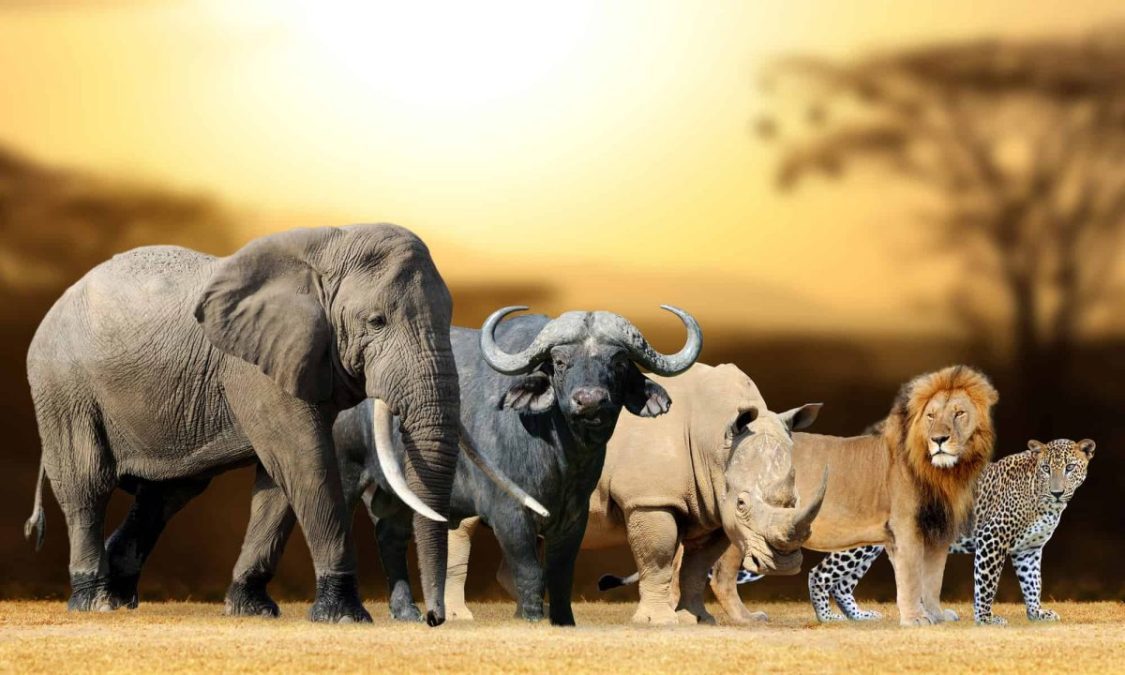
In Africa, the Big 5 game animals are the lion, leopard, rhinoceros, elephant, and African buffalo. Today, these African Big 5 animals are mainly associated with the most popular animals that tourists like to spot and photograph on their wildlife safaris.
But the origin of the name Big 5 is a lot less pleasant, more about this later.
Seeing all African Big 5 animals on a safari is not always easy because some of them are not common or because they are very difficult to find. Buffalo, lions and elephants can still be seen in several places in Africa.
Elephants and buffalos usually live in large herds, making them easy to spot. Lions also typically live in groups and are found in many places. Seeing a leopard is becoming more difficult, mainly because it lives solitary and particularly hunts at dusk and at night.
During the day, a leopard hides in bushes and trees. Rhinos are the most endangered of all African Big 5 animals and are found in far fewer places.
Why Are They Called the Big Five Animals?

Lion, leopard, elephant, rhino and buffalo were given the term “The Big 5” by the 19th Century by big game hunters because of their extreme difficulty to hunt on foot.
Big game hunters used the term Big Five to indicate those 5 animals that were not so much the biggest animals to hunt, but also the most dangerous and difficult animals.
Fortunately, the Big 5 are today protected in national parks, and the term is most often used by tourists who go hunting with their cameras to capture the animals on film. Today’s tourists contribute directly to the conservation of these magnificent animals and their habitats.
How Dangerous Are African Big Five Animals?
The fact is that rhinos, buffalos, and elephants do not run away quickly when they are injured, or when people come too close to them. These African wild animals are more likely to take the attack and go after the hunters.
Leopards, in turn, are very difficult to find in the trees and dense bushes of Africa where they like to hang out often. Together with African lions, leopards are of course also predators that hunt for meat, making them very dangerous for potential prey including humans.
Are African Big Five Animals Threatened with Extinction?
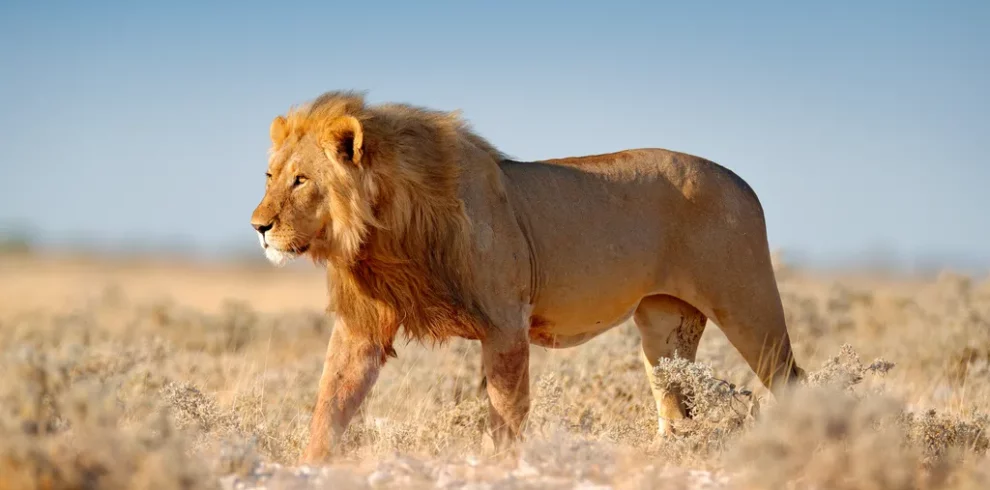
Yes, African big 5 animals are threatened with extinction.
This is due to poaching and shrinkage of their habitats. Four of the Big 5 are currently on the IUCN Red List of Threatened Species. Buffalo are the only ones of African Big 5 animals that are not endangered; they are widespread and well represented.
The vulnerable animals are leopards and lions. These species’ numbers are sharply declining and they are at risk of becoming endangered.
The Africa elephant is also very vulnerable. Fortunately, due to many wildlife conservation projects, the number of elephants in Africa is increasing again.
Unfortunately, elephants remain very vulnerable because of ivory poaching and declining habitats. Rhinos are in the worst condition and are therefore seriously endangered, with an extremely high chance of extinction.
Meet the African Big 5 animals
1. African elephant

The male African elephant is the largest land animals on Earth reaching heights of 13 feet and weighing up to 7000 kilograms. Their incisors grow into long tusks, which they use to dig, move objects and as weapons, while their famously huge ears help them to regulate their body temperature.
2. Africa Buffalo

The African buffalo or Cape buffalo is a large, horned bovine found in East Africa and South Africa. Both females and males feature horns that form a continuous bone shield across the top of their skulls. Buffalo are very unpredictable and fearless, which explains why they have never been domesticated. They are not domestic cattle ancestors and are only distantly related to other bovines, like the Asian water buffalo. Only lions have the group strength to hunt African buffalos and these bovines are no easy meal.
4. African Lion

Many centuries ago, lions were among the most widespread large land mammals after humans. Today, they are a vulnerable species with most of the wild lions in the world residing in sub-Saharan Africa.
Lions are unusually social compared to other cats. They live in prides of related females, their cubs and a handful of adult males. Lion prides spend most of their days dozing in comfort and hunt in the dark hours between dusk and dawn.
4. African Leopard
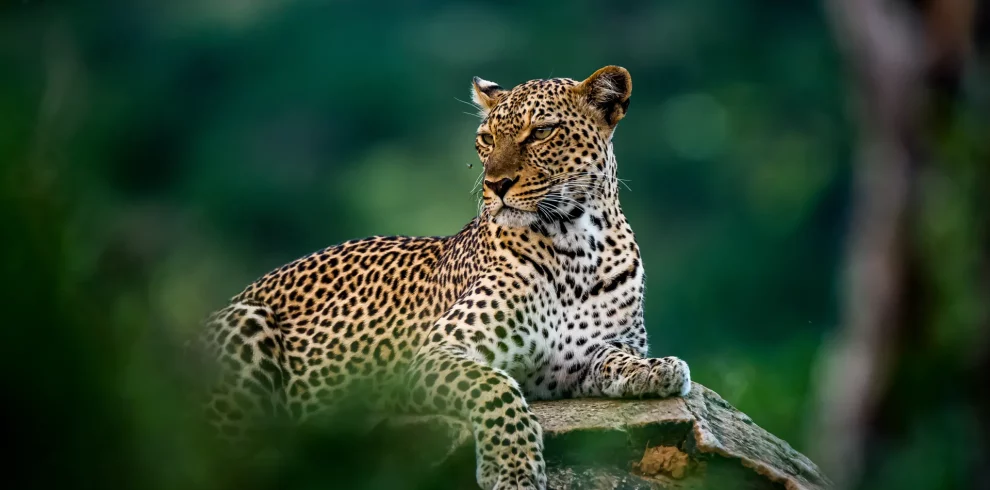
Leopards are lighter and smaller than jaguars with similar rosettes on their fur. And like jaguars, melanistic leopards are called black panthers.
They are solitary cats that make excellent use of camouflage. Leopards are one of the fastest big cats, able to reach speeds up to 58 kilometers per hour. They are naturally shy and nocturnal, which is why they are so hard to find and observe in the wild.
5. Rhinos

There are two kinds of African rhino: the black rhino and the white rhino.
It’s not their colour but the shape of their upper lip that determines which species is which. The black and white rhino are actually the same colour of grey!
The easiest way to tell if it’s a black or white rhino is to look at the shape of its mouth. ‘Black’ rhinos have a hooked, pointed upper lip while ‘white’ rhinos have a broad, square upper lip. The species is classified as critically endangered.
Rhinos are slaughtered to supply the demand for their horns in Asia. A rhino horn is made of keratin, the same substance as our nails – which means it will re-grow if cut.
But, the illegal trade values the base of the rhino horn under the skin, the harvesting of which results in such severe wounds that rhinos that might have survived the initial assault invariably die of blood loss and shock when their horns are removed by a machete.
Where Can You Find African Big 5 animals?

Luckily, African Big 5 animals can still be found in various countries. Below is a brief list in which countries and parks you can admire the Big 5 game.
There are several countries where the Big 5 can be admired, the destinations mentioned below are all included in the Tulambule safari program.
1. Kenya
Lions are found in most parks in Kenya. However, Tsavo is home to the most feared and ferocious lions of Africa. What is unique about Tsavo lions is that the males here do not have a mane. The largest lions live in the Masai Mara.
Elephants are abundant throughout Kenya’s wildlife parks and reserves (except Lake Nakuru) but if you want to see some of the biggest herds (and tusks!) in East Africa, head to Amboseli National Park. Magnificent herds of these gentle giants converge to graze and drink at Amboseli’s perennial swamps and lakes.
Tsavo, Masai Mara and Samburu also have good elephant populations.The largest buffalo herds in Kenya can be found in the Masai Mara, Amboseli National Park, and Meru National Park. You visit Lake Nakuru for white rhinos and for black rhinos you have the best chances in the Masai Mara, Nairobi National Park and Ol Pejeta Wildlife Conservancy.
Finally, you will find leopards in various Kenya safaris parks, including Nakuru, Masai Mara and Samburu National Reserve (possibly the best place in Kenya to see leopards). The black leopard was recently spotted in Laikipia County for the first time in 100 years.
2. Northern Tanzania
The concentration of wild animals in Northern Tanzania safari parks is phenomenal!
Most animals are found in the Serengeti, Ngorongoro Crater, Tarangire National Park, and Lake Manyara National Park. For elephants it is best to go to Tarangire, for lions you visit the Serengeti and for rhino you go to the Ngorongoro Crater or Serengeti.
You’ll also encounter leopards and buffalos in the parks mentioned above. Leopards are the most difficult to find, but one of the best places to see them is Serengeti’s Seronera Valley.
3. Southern Tanzania
Four of African Big 5 animals are found in Ruaha National Park and Katavi National Park.
These are two beautiful unspoilt nature parks, where you have the wildlife almost to yourself. Nyerere National Park is also a park that is not yet very popular. Here you can encounter the Big 5 with a good dose of luck.
However, the three parks also have another advantage; here you have a chance to encounter rare African wild dogs! Not one of African Big 5 animals, but an animal that safari goers would love to get in front of the camera.
4. Uganda
African Big 5 animals can also be found in Uganda, spread across various national parks.
Buffalos, Lions, and Leopards are there in Queen Elizabeth National Park, Murchison Falls National Park, Kidepo Valley National Park and Lake Mburo National Park.
The best place to see African Elephants in Uganda is in Murchison Falls, Kidepo and Queen Elizabeth National Parks. The only place where wild rhinos can currently be seen in Uganda is in the Ziwa Rhino Sanctuary near Murchison Falls National Park.
Uganda is actually home to the Big 6, if we include the mountain gorillas in Bwindi Impenetrable Forest National Park and the Big 7 if we also include the chimpanzees of Kibale Forest National Park!
5. Rwanda
African Big 5 animals in Rwanda are all found in one park called Akagera National Park. 10 black rhinos were reintroduced to this national park from South Africa in 2017, after the last rhinos disappeared from the park in 2007.
Just like Uganda, Rwanda also has the Big 6 with the mountain gorillas in Volcanoes National Park and the Big 7 with the chimpanzees in Nyungwe Forest National Park.
When is the Best Time to See the Big 5?

Peak safari season runs from about July to October across Africa. This coincides with the continent’s dry season. There are many reasons why it is easier to find them at these times:
The lack of rain means the vegetation dries up and thins out, literally making it easier to see a rhino or buffalo compared to the long, dense grass and heavy foliage of rainy season.
This particularly applies to leopards, which spend much of their time in trees – in dry season, they will have fewer leaves, making these sleek felines easier to spot.
The lack of rain also means that ponds, streams, and smaller water courses dry up, forcing animals to gather around the remaining large lakes and rivers.
Most animals must drink every day so they don’t stray too far from the little water that is left. This is particularly true of herds of buffalo and elephant, which often migrate to life-giving rivers like the Tarangire River and Kidepo River.
A Sample of our Africa Safaris with a good chance of seeing the Big 5
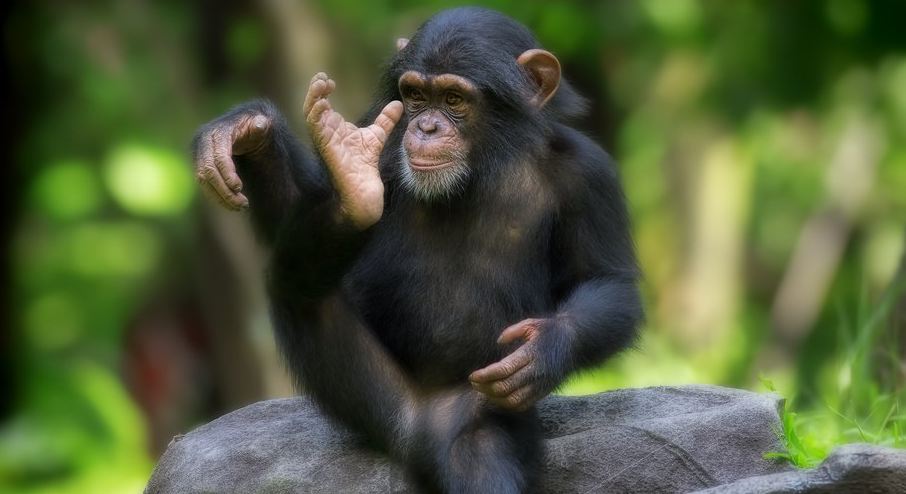
10 Days Rwanda Safari: Big 5, Chimps, Gorillas & More!
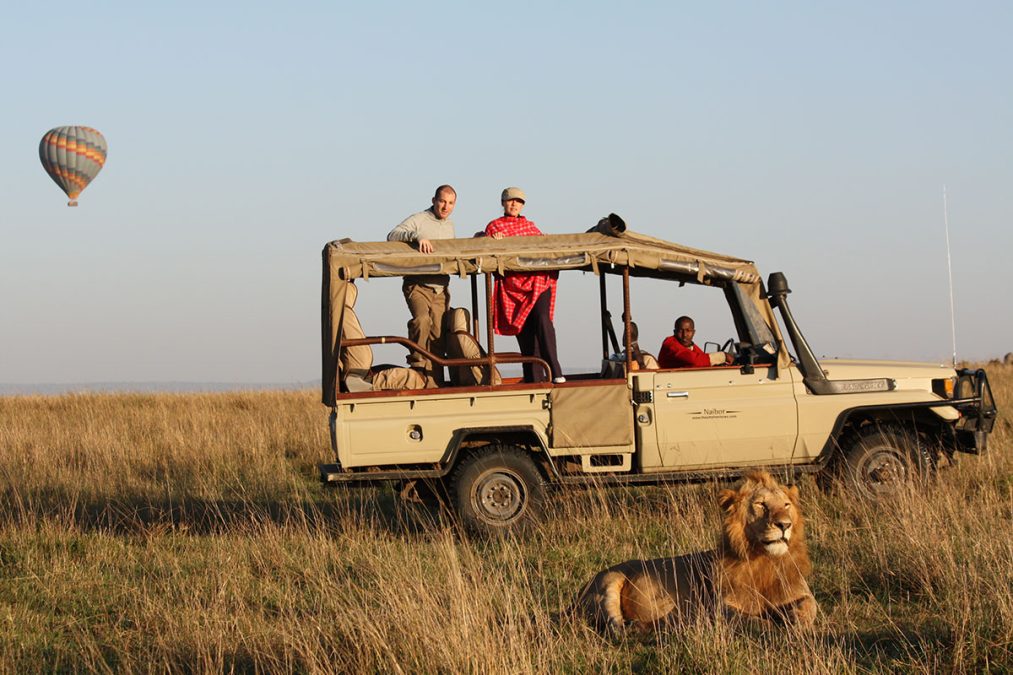
12-Day Uganda Kenya Safari: Gorillas, Big 5, beautiful Scenery, Culture & More!
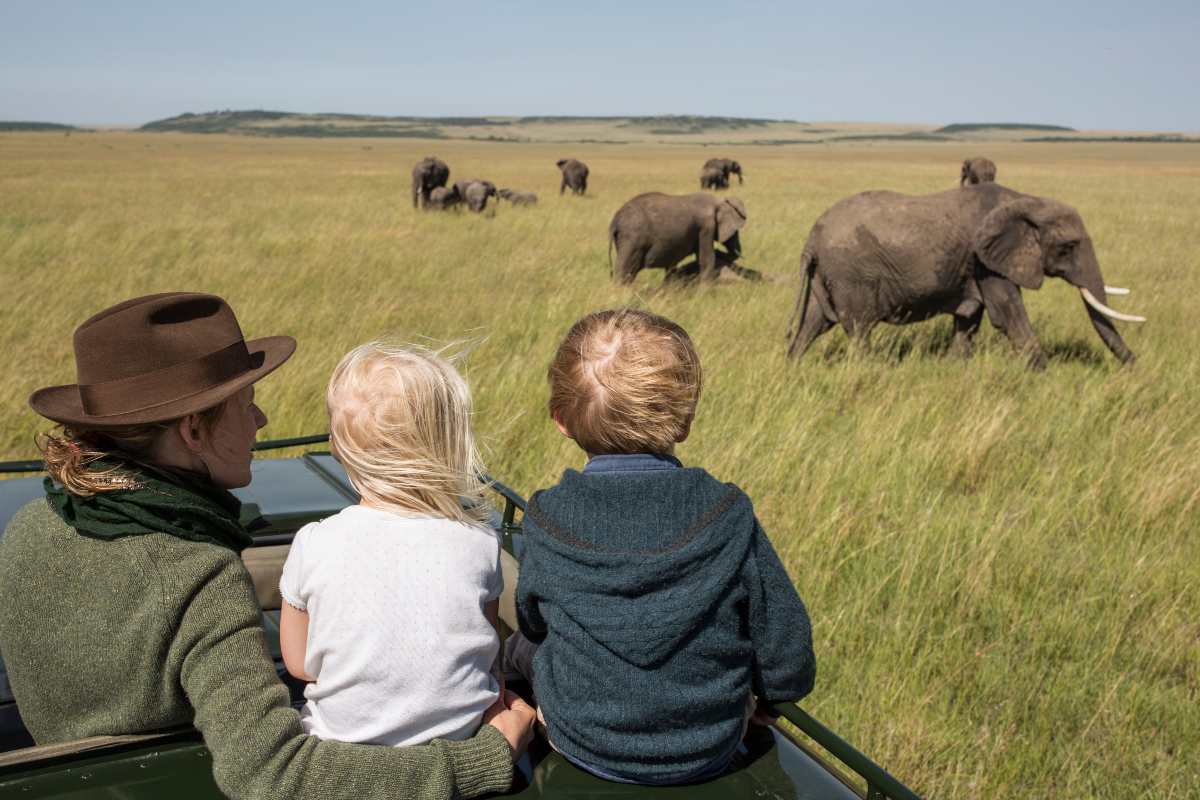
11-Day Uganda Tanzania Safari | Gorillas & Big Game Viewing
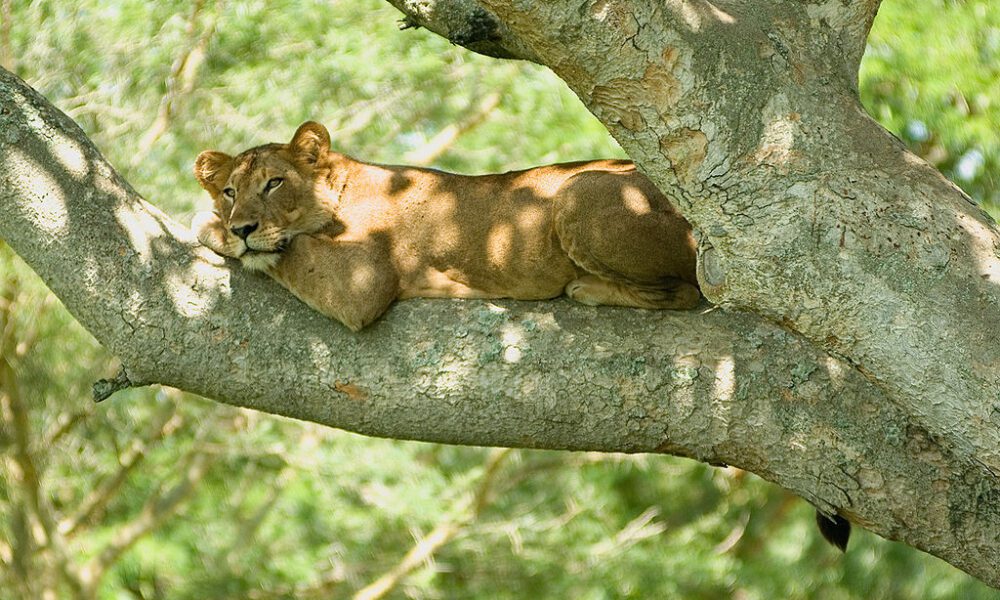
10 Days Uganda Wildlife Safari, gorillas, Chimps & Big Game

7-Day Uganda Wildlife Safari | Chimps, Gorillas, Big 5 & More!
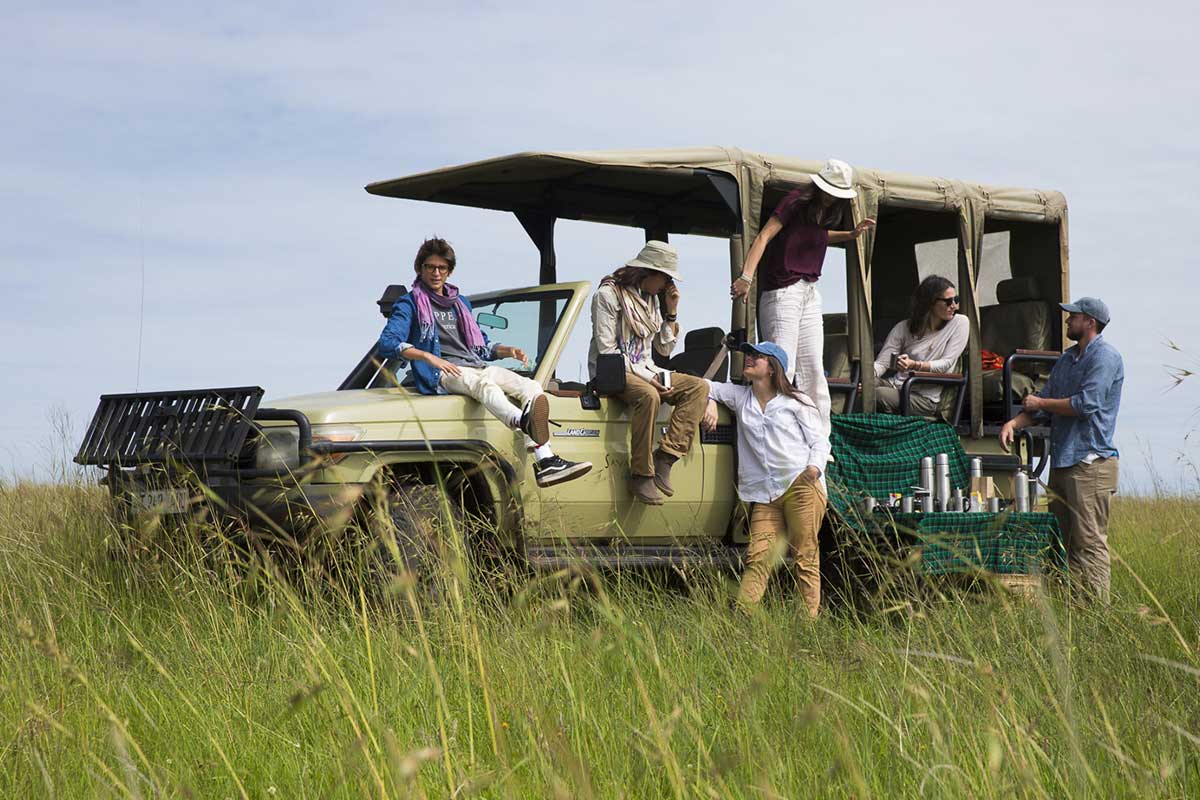
11 Days Kenya’s Big 5 & Conservancy Safari
Our Africa Specialists!
Do you have questions? Ask our specialists, they will be happy to help you organize your Big Five safari to Africa!
